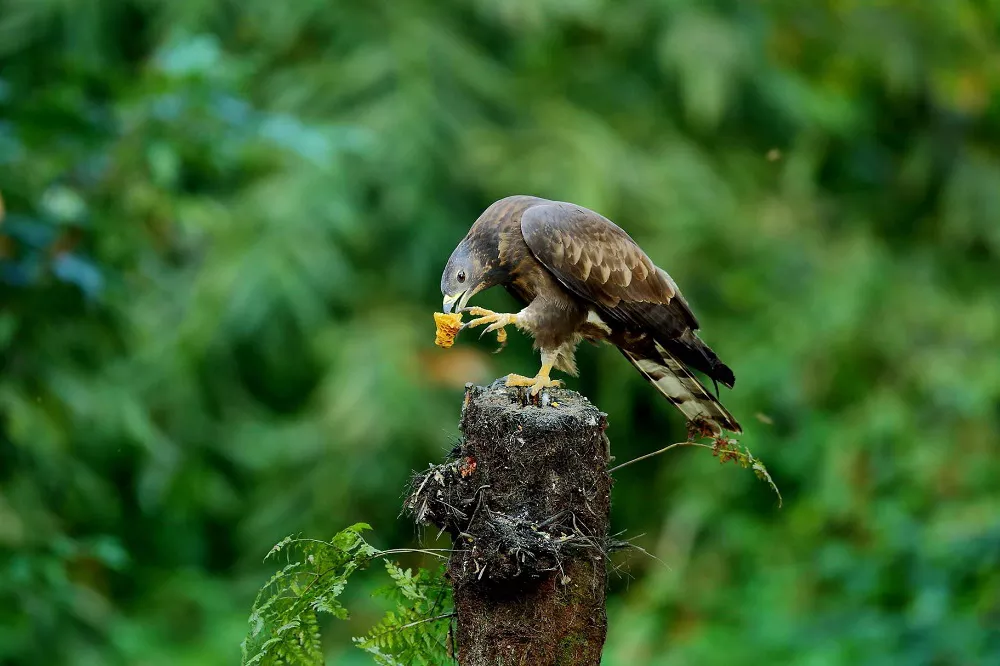Honey buzzards, despite their name, do not actually eat honey. These birds of prey are primarily carnivorous and feed on a variety of small animals, such as insects, reptiles, and small mammals.
Honey buzzards are found in many parts of Europe, Asia, and Africa. They are known for their distinctive diet, which includes a variety of prey items. The most common food sources for honey buzzards are reptiles, such as snakes and lizards, as well as small mammals like rodents and bats. They are also known to eat birds, eggs, and insects.
Although honey buzzards do not eat honey, their name likely stems from their habit of raiding the nests of bees and wasps. These birds are known to eat the larvae and pupae of these insects, which are high in protein and provide a valuable food source.
Honey buzzards have a unique feeding behavior that sets them apart from other raptors. Rather than soaring high above their prey and diving to catch it, honey buzzards prefer to hunt by gliding through the forest canopy. They use their keen eyesight to spot potential prey on the ground and swoop down to catch it with their sharp talons.
In addition to their hunting skills, honey buzzards are also known for their intelligence. They have been observed using tools to extract insects from tree bark, and they are capable of learning new behaviors through observation and trial-and-error.
In conclusion, honey buzzards do not eat honey, despite their name. These birds of prey are primarily carnivorous and feed on a variety of small animals. While they do raid bee and wasp nests for larvae and pupae, their diet is not centered around honey. Honey buzzards are fascinating birds with unique feeding behaviors and impressive intelligence.


 Facebook
Facebook  Instagram
Instagram  Youtube
Youtube 